Under the warm lights of the Casa Bovina dining room, a round of Certified Piedmontese rib cap glows red, like a rare jewel.
A selection of house-cured charcuterie made from Nebraska-raised Mangalitsa pork is served artfully arranged on a slab of reclaimed wood.
Beef Wellington — a dish chef Zach Midgett, who came to Lincoln from Napa Valley’s famed French Laundry, says he’s still perfecting — arrives beautifully plated, with a piece of fork-tender Piedmontese meat at its center, surrounded by golden pastry that’s melt-in-your-mouth buttery.
Nearly everything that comes out of the kitchen at Casa Bovina, the restaurant owned and operated by Certified Piedmontese, is raised in Nebraska and cooked on the premises of its east Lincoln headquarters, near 84th and Havelock streets.
“Ideally, we are trying to make this go full circle,” Midgett said. “Nothing here is done in a half-measure.”
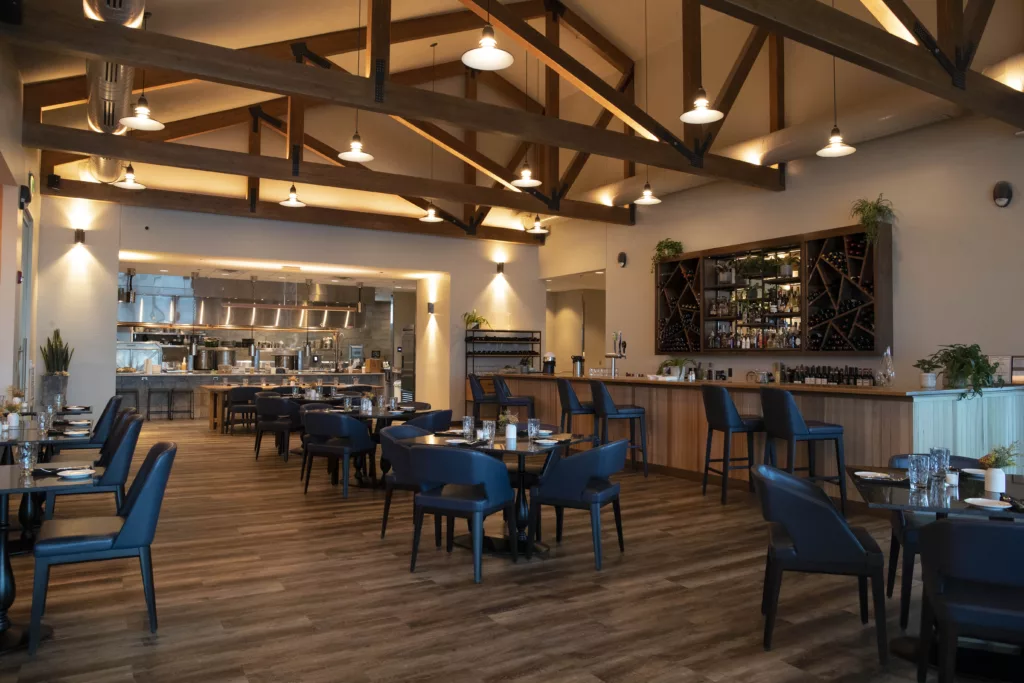
Photo courtesy of Joshua Foo, joshfoolovesyou on Instagram
Certified Piedmontese is in the business of cattle – a business that now stretches across Nebraska.
Ranchers in the Sandhills raise calves sired by heavily muscled, white Piedmontese bulls, a rare Italian breed with special characteristics. That beef comes to Lincoln to be sold from the butcher case at The Mercato, the company’s specialty store on its campus. (Soon, a second Mercato location will open in West Omaha.)
It’s processed, packaged and shipped to thousands of customers around the country, giving the brand an increasingly national reach.
Piedmontese beef is popping up both on menus across Nebraska and on billboards advertising it as a “healthier beef option” across Interstate 80.
And it’s showcased on plates at Casa Bovina, a restaurant often packed with Nebraska visitors clamoring to try one of the state’s few high-end restaurants to open in years.
All that raises a question: Just who — and what — is Certified Piedmontese?
The company is owned by Lincoln’s Peed family, including Tom Peed, the president of Sandhills Publishing, one of the city’s biggest businessmen and also one of the state’s largest right-wing political donors. The Peeds and company leaders have clearly spared little expense on its HQ and flagship restaurant, assembling a team of chefs with serious restaurant world pedigrees.
The company is growing. The business opened its east Lincoln campus four years ago. It moved its high-tech packing operations here, and then built a full e-commerce fulfillment center on the site, formerly an outdoor farmer’s market.
As Nick Lahm, the company’s director of operations, recently walked through the clean, modern Piedmontese headquarters, he pointed out what’s come since: New coolers, new freezers, a new work room, a new cut room and a warehouse.
And then he led a tour of the newest project: An on-site smokehouse dedicated to pork charcuterie made with Nebraska raised hogs by chef Tony Incontro.
“Cold storage and processing usually happens inside a white box,” Lahm said. “When you want people to understand why it’s worth it, you have to show them why. It’s not folding chairs and card tables.”
White Piedmontese cattle are the bovine heart of this business, making the company unique because the cattle are indeed different from the vast majority you see grazing along Nebraska highways.
About 50,000 years old, Piedmontese are a cross between two Italian breeds, and a DNA mutation makes them “double muscled” — essentially, the animal’s DNA never tells its muscles to stop growing. It’s a trait particularly obvious in bulls, said Thad Robertson, who runs cattle procurement for Lone Creek Cattle, the live animal division of Certified Piedmontese.
“The mutation also makes the meat lean and tender,” Robertson said. “Lean like grass fed, but tender, like prime.”
The extra muscle mass in Piedmontese means it has less fat, thanks to an inactive myostatin gene. It doesn’t have the same fatty marbling as traditional beef breeds, but its short muscle fibers remain tender.
Many cuts of Piedmontese beef, like the center cut ribeye, the flatiron and the sirloin, contain fewer calories than a serving of salmon even though they are higher in protein, according to the brand’s website and nutrition information from the United States Department of Agriculture.
Robertson, a career-long cattleman, had never heard of such a thing when he joined Lone Creek nine years ago.
“I thought they were full of crap,” he said. “That isn’t possible. But this breed turns that whole idea on its ear.”
When Lone Creek started, about 12 years ago, it bought Piedmontese cattle from around the country and brought the animals to Nebraska. Now, the operation has herds located here and in South Dakota and Missouri, among other places. All bulls are pure Piedmontese, and the herd also includes a handful of full-blood heifers. Most are a mix of Piedmontese and Black Angus.
The animals are raised without hormones and antibiotics, are non-GMO and though some are grain fed, many are grass fed.
That grass fed beef? It’s the fastest growing product in the company, Robertson said.
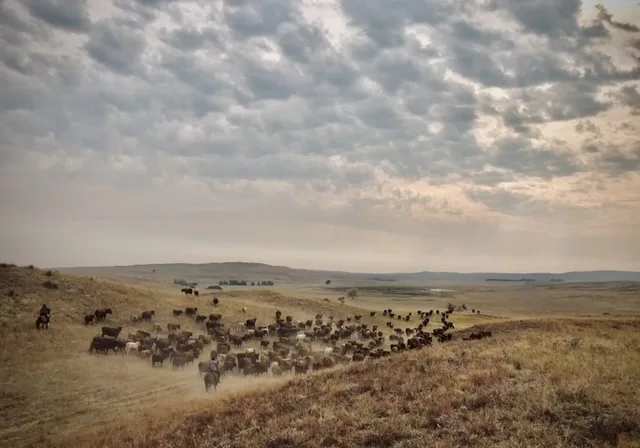
Photo courtesy of Ryan Cone
The fact that the company’s beef is challenging some long-held steak truths is thrilling to rancher Ryan Cone. The 39-year-old owns a small ranch just north of Arthur, deep inside the Nebraska Sandhills. There, he runs about 1,700 head of Piedmontese grass-fed calves – raising some of the meat served at Casa Bovina and shipped around the country.
“Buyers are becoming more aware of what it is they want,” he said. “They want to know that it is sustainably and humanely raised, where it comes from. That is driving demand.”
Cone’s family has been in the Sandhills since the early 1900s, when his grandparents homesteaded a ranch near Arthur. But he didn’t inherit that ranch. Instead, he dreamt of buying his own. To do that, he said he had to “be progressive.”
“I have a lot of neighbors who frown on those white Piedmontese bulls running around out there,” he said. “But being progressive and different is what has allowed me to grow and be able to buy land. I’m hitting a different market, the people who are willing to think outside the box.”
The company itself continues to expand in different directions, including through Incontro, whose Incontro Cured will launch Mangalitsa charcuterie, salami and aged ham this winter. The newly added dry aging rooms and smokehouse are designed for Incontro’s division, which is, like the cattle division, focused on a rare breed.
The Mangalitsa is a curly haired pig that’s indigenous to Hungary. It nearly went extinct during the Eastern European political strife of the late 20th century.
Now, it’s now being raised on small farms in Nebraska, including Incontro’s own farm in Fort Calhoun.
Mangalitsa pigs are fatter than most, with a higher percentage of lard, which is believed to make the pork taste better.
Incontro is creating a cured meat similar to prosciutto; he’s also making charcuterie and sausage targeted primarily to restaurants and chefs. The hams, which are at least five pounds and will cost you nearly $500 apiece, are available now.
Incontro said this fall he had several restaurants in Chicago and San Francisco who have already purchased his charcuterie. He anticipates it will be on the menu at Casa Bovina soon.
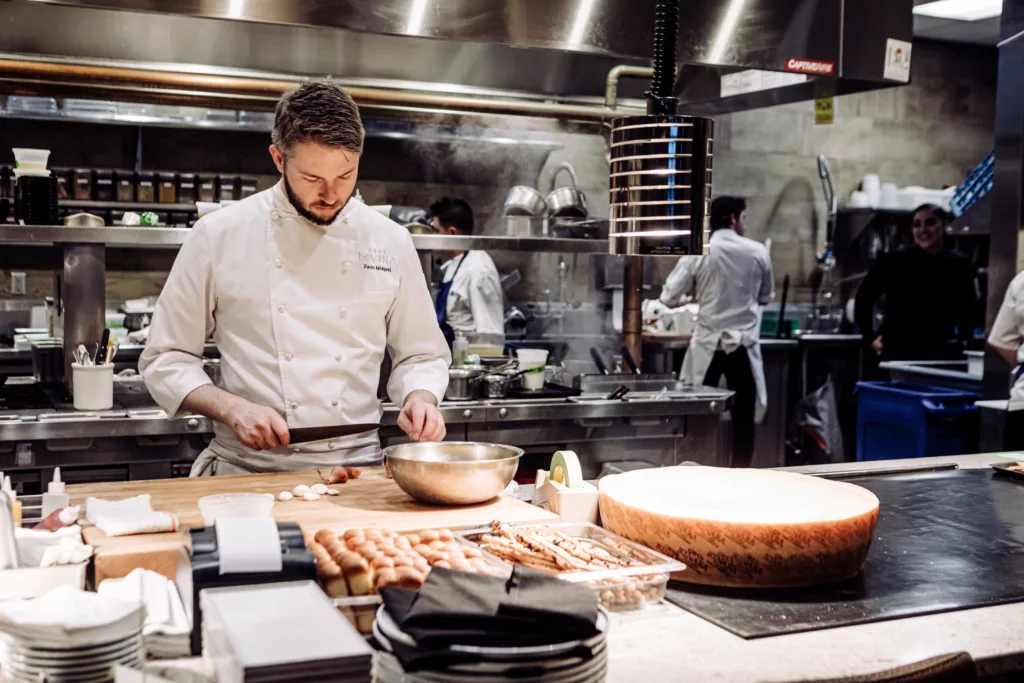
Photo courtesy of Joshua Foo, joshfoolovesyou on Instagram
Midgett, the chef at Casa Bovina, said Incontro is one of the reasons he landed in Nebraska after cooking for famed American chef Thomas Keller.
“No one is making Spanish-style Mangalitsa or seven-year aged jamon in the United States,” he said. “We get a unique opportunity to work with someone at the top of the game.”
He said the same about the on-site bakery, run by another Keller alum, who baked at Bouchon Bakery, and the on-site greenhouse, where he goes each day to harvest vegetables.
Diners are noticing, too. There are a handful of regulars from Lincoln, people celebrating anniversaries or birthdays, tourists and a lot of diners who drove an hour from Omaha to check it out. Reservations have become hard to nab.
Ultimately, Midgett said he’d like to be noticed by the James Beard awards, but his more long-term goal is future facing: to continue to feed those guests.
“Ranchers who raise our cattle get to see the circle when they come in and enjoy it. There’s business groups, there’s college kids on dates. We really do have everyone coming in,” he said. “It’s a great stomping ground.”

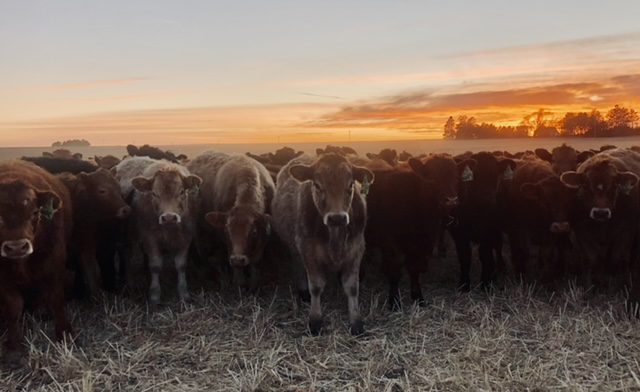


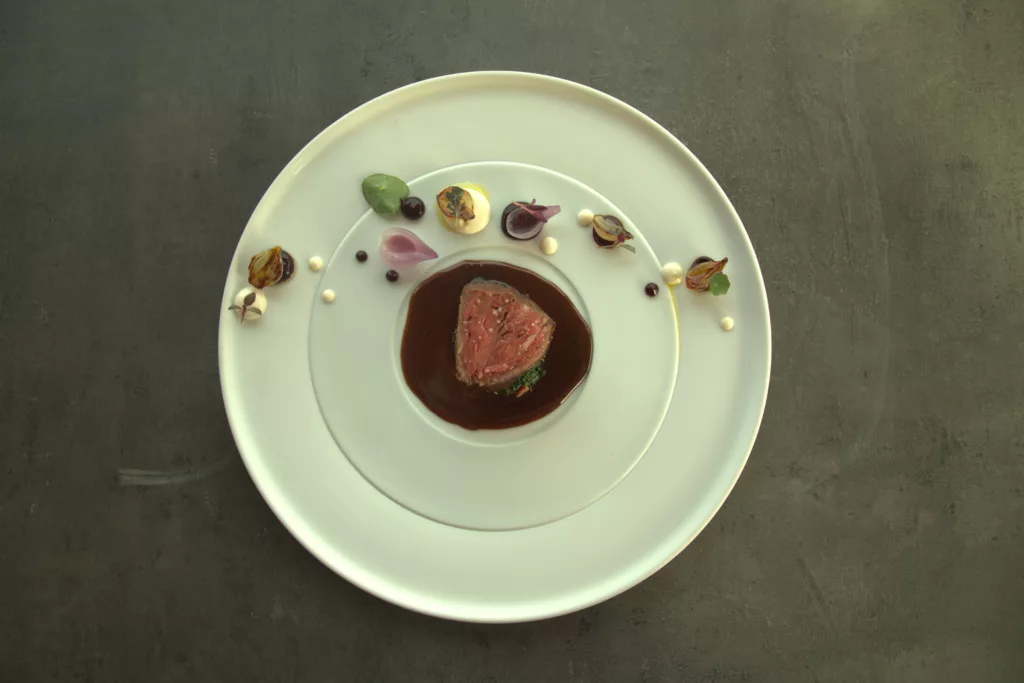
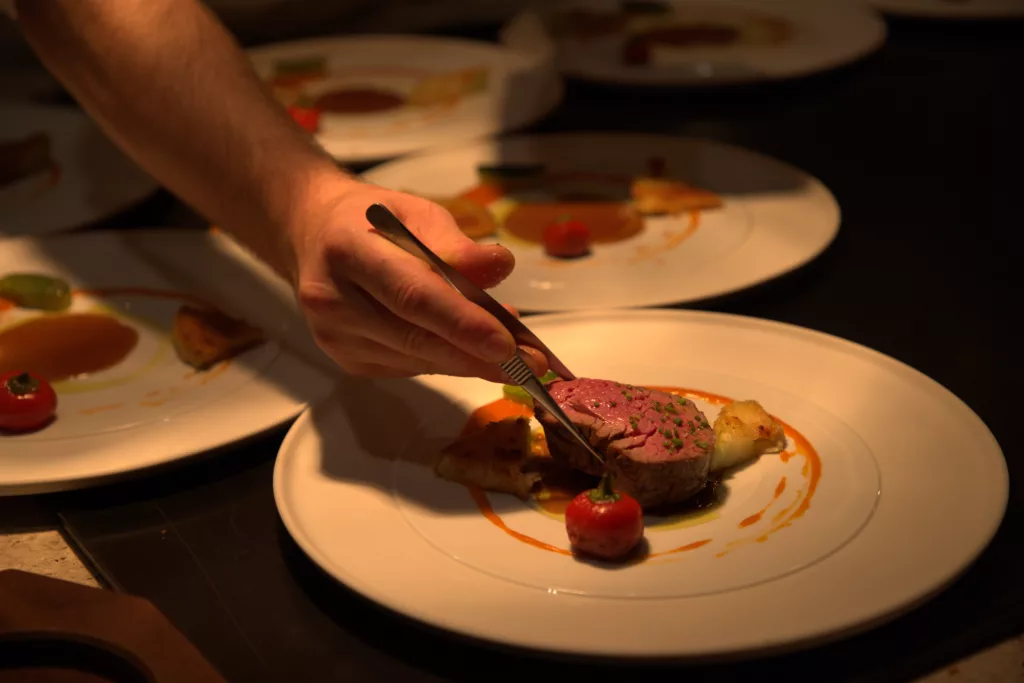
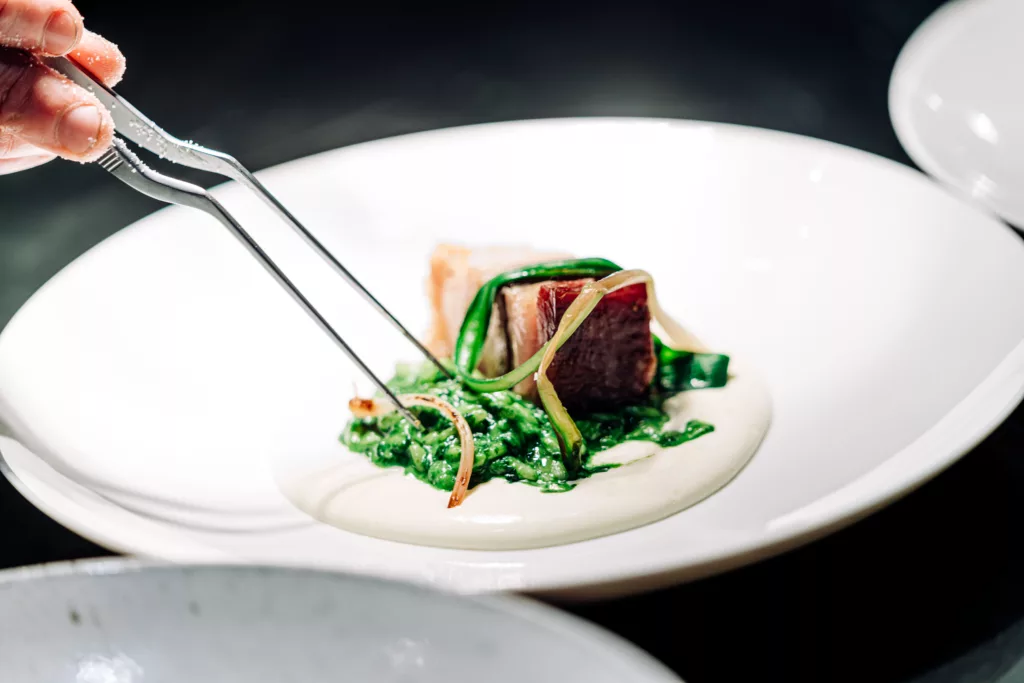
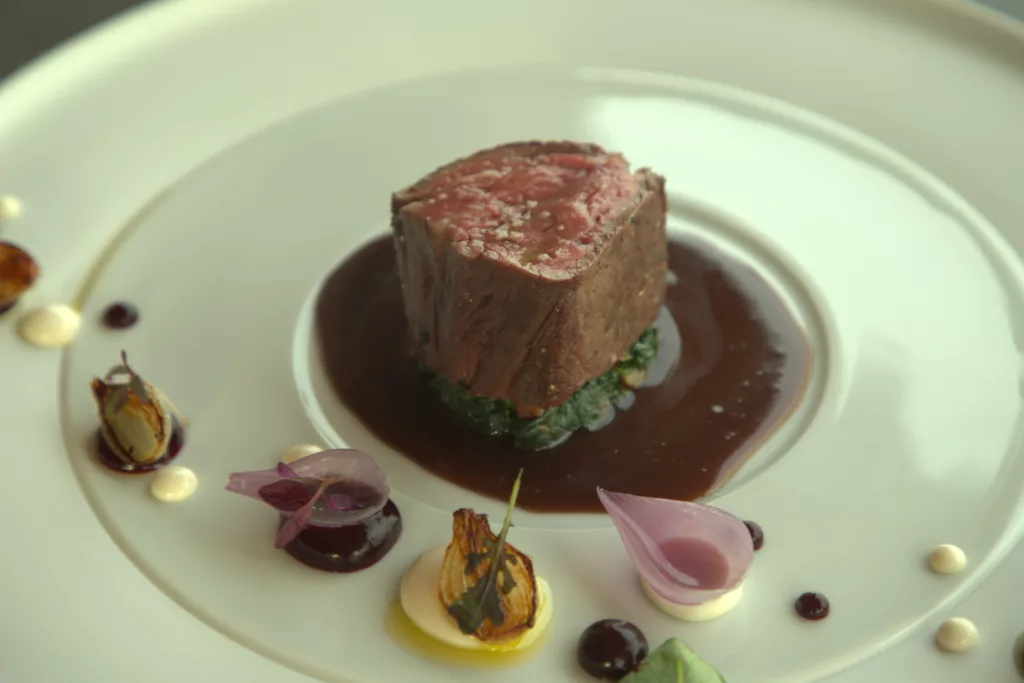


5 Comments
8 years as a food critic for OWH? Could’ve fooled me since this article reads like poorly-written ad copy. Seems to be no indication that you’ve done much besides regurgitate whatever information you were fed by CP—and seemingly all you were fed was information as there’s no indication that you even bothered to try any of the food yourself. I’d expect a bit more from something claiming to be journalism, especially when your newsletter clearly recognizes the need to justify to your readers why you decided to write such a wholly uncritical article on a company with such problematic financial backing. I think Nebraska will be well-served if you leave this sort of article to the non-independent publications.
I think a little more research should go into this. I cannot find any reputable source claiming that Piedmontese cattle or its ancestors date back 50,000 years. The Piedmontese association of the United States and Oklahoma State both claim the ancestors of these breed met around 25,000 years ago but that the modern breed was not genetically finalized until after 1887. Also, I appreciate the claims of humane treatment and sustainability, but I fail to see any third party review of these claims or even an inner system to track treatment of the animals on the farms stretched over a large portion of the Midwest. These kinds of claims made by large companies with lots of financing should be looked at responsibly with a critical eye, as claims without backing by large companies often come at the expense of smaller farmers who honestly try to raise animals in a sustainable and humane way. Please do not unwittingly participate in greenwashing. A better story might be the plight of small farmers trying to get their animals to table in Nebraska and facing almost insurmountable obstacles in their paths. Thanks for your time. I have truly appreciated all your hard work on the other articles I’ve read in the press.
This is exactly why appreciate your articles. No comparison to the Lincoln Journal (Urinal)/Star and their front page article of a mugging Alton Brown pouring his (Runza) chili over a cinnamon roll as a representation of Nebraska cuisine… My dad was a head meat cutter for Safeway years ago who worked with Russ and Clayton (B & R/Russ Markets) and Maynard Brummer (Mr. B. markets) and my maternal Boone County farm cousins raised calves for their 4-H projects so I learned how to “appreciate” good beef. Thank you!
Please stop writing about animal cruelty. This is heinous and disgusting. How about you shift your focus to something worthwhile and that doesn’t harm other living beings(?).
To Bryan: have you more to contribute? Have you personally dined at Casa Bovina? I’ve eaten there 9 times in the last 18 months, and believe me when I say that the food is worth the time and the cost. How many times have you had food prepared by a chef who hails from a Michelin-Starred restaurant?
Also, the chefs are more than happy to show their guests around the open kitchen, and during the growing season, guests can take a walk through the on site garden (all organic and sustainably grown) and check out the greenhouse and chickens— which are free range, fed with veggie & fruit scraps from the restaurant kitchen, and the source of eggs for the restaurant (laying hens, so not butchered).
Perhaps you should visit sometime and get the experience this author failed to provide, you might be pleasantly surprised!